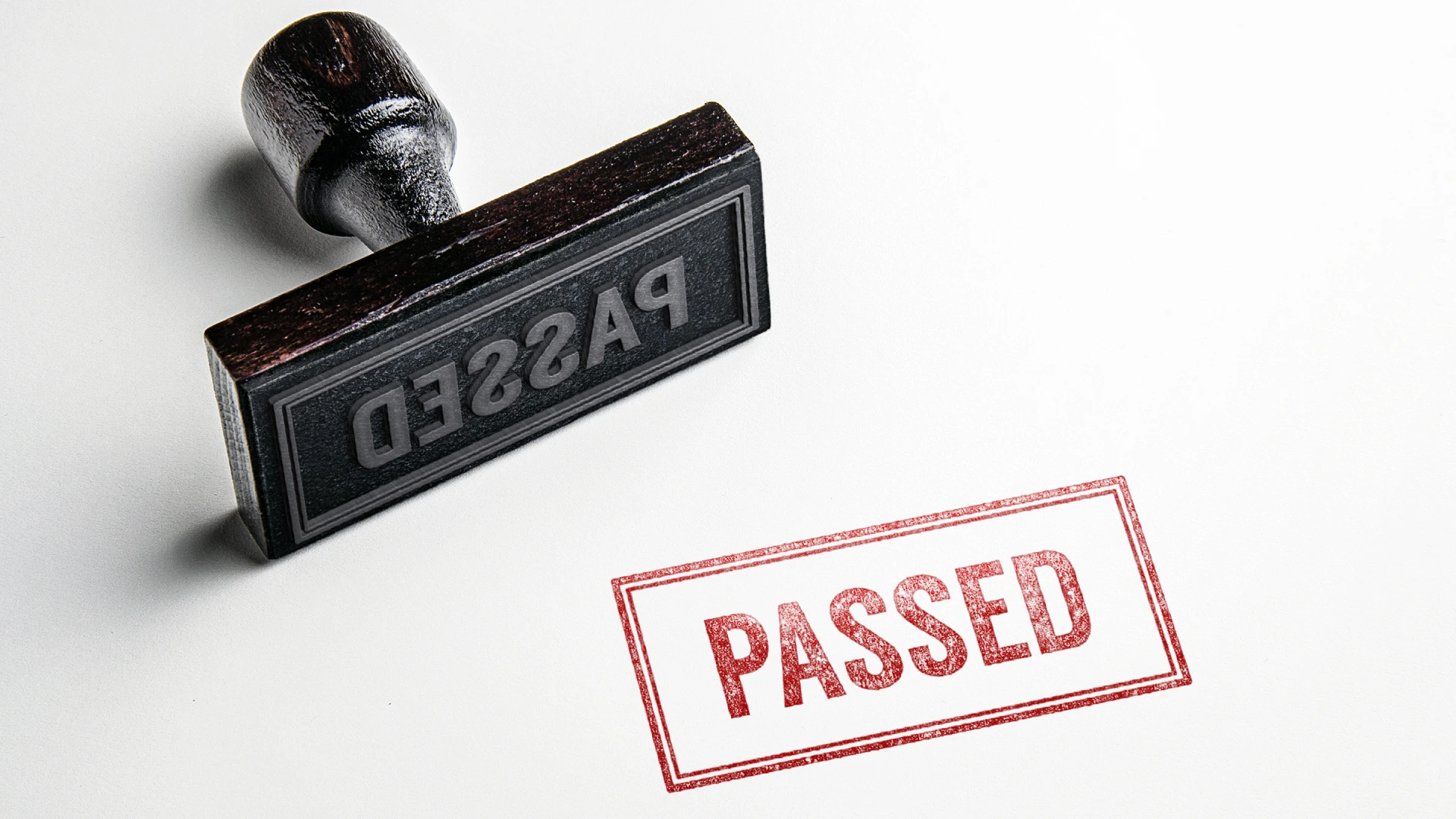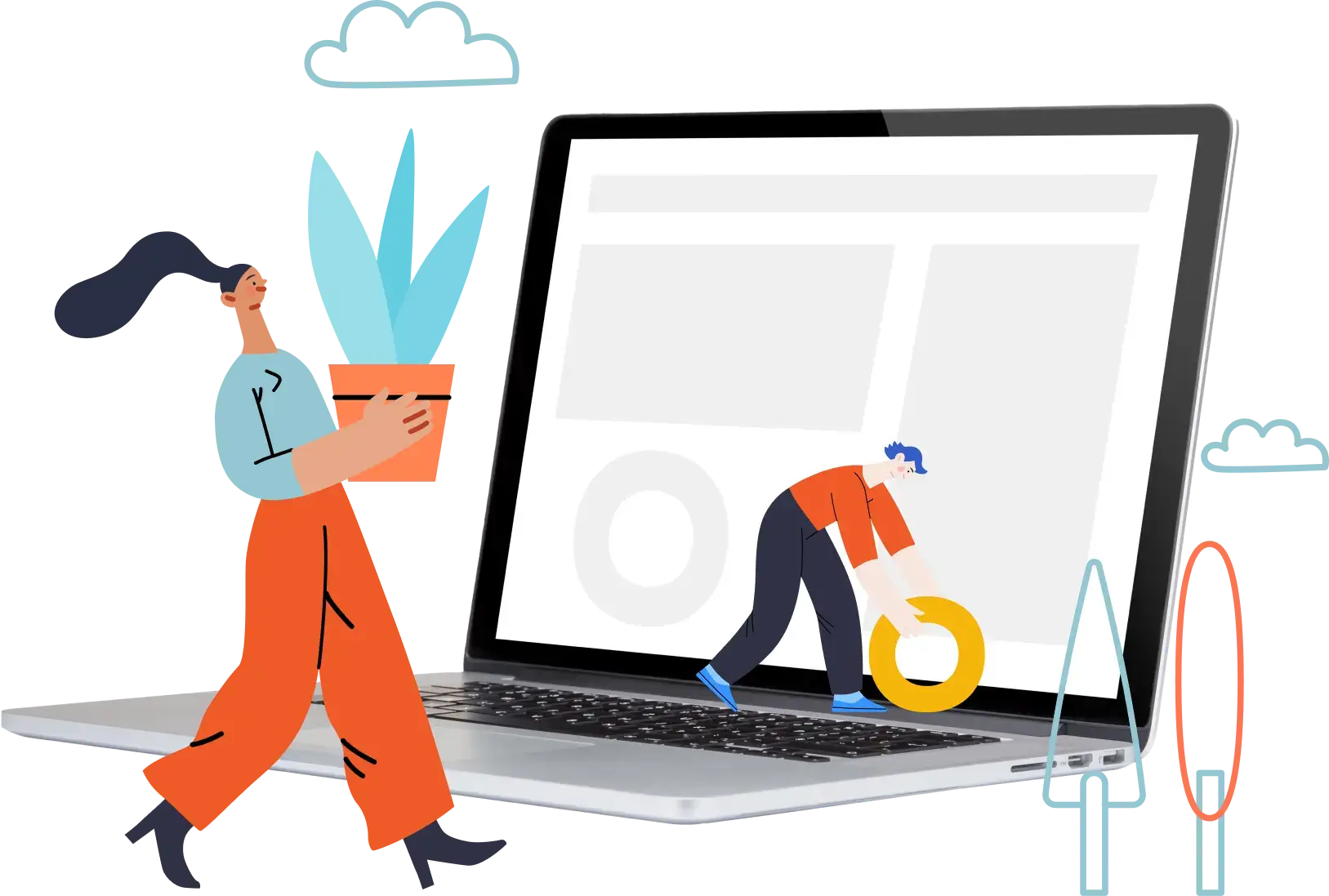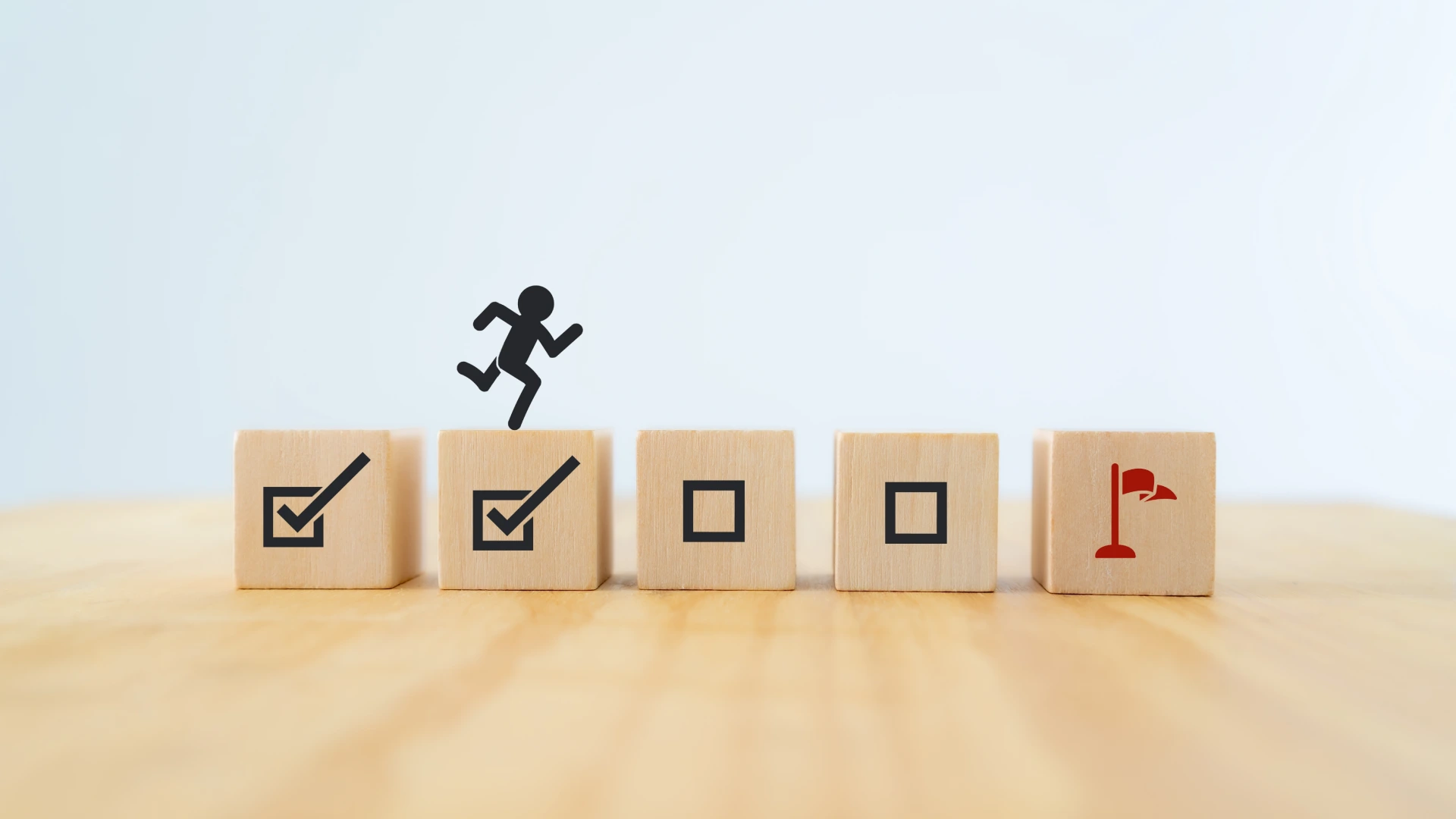We have been fine-tuning our strategic web design process week after week for YEARS to get it as close to perfect as possible — and we think we’ve landed on a winning formula.
Our process consists of seven key steps:
- Onboarding
- Architecture
- Web design
- Development
- Pre-launch testing
- Launch & training
- Maintenance and metrics
What makes our web design process special? We don’t believe in one-size-fits-all solutions or cookie-cutter templates. Instead, we create unique, custom web designs.
Unlike some agencies that take your input, disappear for weeks, and return with a website that barely meets your expectations, we take a different approach. Our process is collaborative, repeatable at a high level, and methodical, ensuring you’re involved every step of the way to get the website you truly want.
Let’s keep going.
Understanding the most common challenges in web design
Web design comes with its challenges, and overcoming them is what drives us. We know these issues may have delayed your plans to build a website, so we want to put them on your radar to prevent any surprises. Common challenges include:
- Unclear goals for the final design
- Poor communication during the project
- Unexpected delays that slow progress
- Inadequate budget planning
- Scope creep due to changing requirements
- Technical limitations with specific platforms
The good news? With Connective, you won’t need to worry about these obstacles. Our process is designed to prevent them and ensure a smooth experience through clear documentation, regular client check-ins, and agile project management.
A step-by-step breakdown of our 7-phase web design process
At this point, we’ve referred to our web design process repeatedly. But you’re probably still sitting there wondering: “It sounds awesome! But, uh, what exactly is it?!”
Our seven-phase process is the result of years of refining and perfecting to ensure it delivers the best outcomes. Here’s a detailed look at each phase and what makes our approach stand out.
Phase 1: Onboarding
We always like to get the web design process off to a strong start when working with clients. We strive to jumpstart things with an onboarding process that is second to none.
Onboarding will include the following:
- Providing a Discovery Questionnaire and reviewing your answers
- Holding a kickoff meeting so we can introduce ourselves and get to know you and your business better
- Listening to what you’re looking for from the website you wish to build
- Setting up a schedule for the design process and managing client expectations related to timelines and revision cycles
- Coming up with a sitemap for the web design project
- Gathering assets, such as branding materials, content, etc.
This might sound like a lot to accomplish during a single kickoff meeting. But trust us: We have this down to a science! We also know just how important it is to get on the same page with our clients from the jump.
By doing this, we can avoid unnecessary mistakes like:
- Failing to set SMART goals for a website before designing it
- Neglecting to communicate web design issues and experiencing delays
- Struggling to keep assets organized from the start and losing track of them
By the end of our kickoff meeting, any nerves you were dealing with before it should dissipate. You’ll know your business is in good hands from the beginning of our web design process.
You’ll also notice that you’re taking part in a well-run operation once you see us break out some of the tools we use to keep web design projects on the right track. We swear by:
- Google Meet and Supernormal for meetings
- Asana for project management
- LastPass for credentials
- Google Sheets for sitemaps and QA
- Google Docs for weekly journal updates
Phase 2: Architecture
As we alluded to earlier, we aren’t going to pull any average, run-of-the-mill web design templates off the shelf and start using them to create your website. Instead, we’re going to build it brick by brick from the ground up.
We begin by finalizing the sitemap for your website and solidifying the architecture we’ll use to construct it. From there, we’ll create wireframes, starting by designing one for the homepage before moving on to the other main pages featured on your site.
Wireframes, also sometimes referred to as screen blueprints or page schematics, are diagrams that showcase the general layout and structure of the pages on a website. Once we finish with them, you can begin visualizing what your site will look like when we’re finished building it.
We do all this at the beginning of our process to prevent any design distractions from slowing us down. As Phase 2 progresses, we’ll also take these steps:
- Collecting content from you to reveal how it will look with the wireframes we’ve created
- Making changes to our layout and structure ideas based on your feedback
- Preparing to apply the latest search engine optimization (SEO) practices by putting together meta tags, keywords, and descriptions
Just like during Phase 1, there is a long list of mistakes we will seek to avoid during this phase. Some examples include:
- Creating wireframes that contain colors and fonts that make them appear overly complicated
- Failing to keep user experience in mind when coming up with an effective website layout
- Overlooking the need to experiment with wireframes by inserting content into them to see how they look
During Phase 2, we will also count on a handful of tools to lead the way. Our favorite tools to use at this stage are:
- Google Sheets for Sitemaps
- Figma for wireframes
- Google Search Console, Analytics, Ahrefs, SEMRush and Screaming Frog for SEO
Phase 3:Web design
Far too often, so-called web design “specialists” kickstart their web design processes by jumping right into Phase 3. They begin designing websites before they’ve laid the groundwork for them — and it shows!
We’ll be honest: The first two phases of our process aren’t all that glamorous if you don’t spend every waking minute thinking about web design (*raises hand*), but they’re necessary. They provide the clear direction needed during Phase 3.
This phase is all about designing your website and giving it personality in the process. We’ll start to do this by:
- Studying both your brand and the industry it operates in to get a feel for what kind of designs seem most appropriate
- Creating mood boards to inch closer to choosing which colors, fonts, and other design elements we’ll include on your website
- Asking you about the web design ideas you have that you want to see incorporated into your site
Beginning with your homepage, we’ll start the process of designing every page on your website. We’ll create designs that work well on both desktop and mobile web browsers. We’ll also allow you to sneak a peek at what we’ve come up with every so often to ensure we’re headed down the right path.
When we finish, we’ll go through our internal web design review process before seeking your approval for our website designs. While we’re doing all this, we’ll also attempt to avoid making any critical mistakes, like:
- Ignoring the voice you’ve established for your brand and failing to keep it consistent across your website
- Neglecting to design your website for desktop and mobile browsers
- Waiting until too late in the process to ask for your feedback
The main tool that we’ll use during Phase 3 is Figma.
Phase 4: Development
In Phase 4, your new website will start to take shape and give you a real sense of what it’ll look like when it’s all ready to go.
But there is still so much work to do on our end. Phase 4 involves developing your website by locking in all the different design elements we’ve come up with.
Some steps we’ll take during Phase 4 include:
- Setting up the domain, hosting, and WordPress environment and installing default plugins for your website
- Establishing a straightforward style guide for your site
- Cementing the look and feel of your website’s homepage and other pages after you’ve approved our designs in pixel-perfect WordPress templates.
- Adding all content to every single URL on your site, ensuring to implement all of the well-research SEO data previously researched.
Phase 4 is also the stage when we start populating your website with content. This is another thing that will make it come alive and feel like more than just a figment of your imagination.
Just like with every other phase, we’ll duck and dodge mistakes along the way during Phase 4. A couple of the most common ones involve:
- Not having access to the necessary content and other assets
- Fielding content change requests after development has already started
We’ll also rely on tools that make the development stage easier for our web designers. WordPress and Elementor are both useful for web development.


Phase 5: Pre-launch testing
Congratulations! At the start of Phase 5 of our web design process, your website will officially be a website.
You can begin poking around to see how it performs when you’re using it, as your customers will. But before you begin sending out links for your site to family and friends and saying, “CHECK THIS OUT!” the Connective team will need to make sure everything on your site is working properly.
We have a comprehensive internal QA process that is designed to test out the following aspects of a new site:
- Functionality
- Speed
- Forms
- 301 redirects
- Secure Sockets Layer (SSL)
- Plugin configurations
We’ll also perform mobile testing on your site and try it out on as many different devices as we can to pinpoint any potential problems. We’ll have our art director review your site to guarantee it lives up to our lofty design standards, too.
And, of course, you will also have a chance to test out your website and tell us if you have any feedback that you would like us to apply to it. We’ll tell you how to communicate this feedback to us with screenshots.
With all the excitement surrounding your newly-designed website, it’s easy to make crucial mistakes during Phase 5. We can help you avoid:
- Requesting design changes during the QA process when it’s too late to make them easily (don’t worry, you’ll have time to request them long before this phase!)
- Failing to test your website on certain types of devices
During Phase 5, Google Sheets is an effective tool for collaborating and tracking changes.
Phase 6: Launch & training
Phase 5 is a little like New Year’s Eve. There is so much anticipation surrounding your new website that you might feel like you’re going to burst at any second!
Phase 6 is when the ball drops in Times Square. We’ll help you launch your website by setting it to go live and submitting it to Google and the other search engines.
We’ll also provide you with a crash course on how to use it. You’ll participate in a recorded training session on how to manage your site that you can refer back to whenever you want.
We’ll set up tools like Google Search Console and other analytics platforms so that you can keep tabs on how your website is performing as well. We will share access to them so you can begin using them right away.
Since we’ll push your website live during Phase 6, you might not think there is any chance of more mistakes being made. But you can make a couple of key errors during this phase that could bring an end to your celebrations.
For instance, you might make the mistake of:
- Launching your site at a high-traffic time
- Neglecting to prepare for potential technical issues on launch day
- Failing to get ready for the uptick in phone calls and emails your business may start to experience with its newfound web presence
We’ll warn you about these mistakes and show you how to steer clear of them. It’s all part of us seeing our design process through to the very end.
Phase 7: Maintenance and metrics
You wouldn’t invest in a new piece of equipment for your business and then just assume it’s going to work like it’s brand new forever, right? Of course not. You have to maintain equipment and make the necessary repairs to it to keep it around for a long time.
The same goes for a website. If you fail to maintain a site after setting it up, it might work just fine for a little while. But eventually, the lack of maintenance will come back to bite you.
This is one final area in which Connective can help. We can show you how to perform regular website maintenance by:
- Performing routine backups
- Addressing website security flaws
- Making updates on both the front end and back end of your website
We can also explain how to avoid making mistakes that sometimes plague new website owners. Examples include:
- Performing website updates without pulling a backup first
- Letting plugins auto-update without checking for conflicts
- Failing to track and review website performance
Additionally, we can lend a hand when it comes to testing the pages on your site for functionality moving forward. We can even assist you with improving site performance and enhancing metrics tracking so you can monitor conversions and see if your site is meeting your goals.
Outside of doing all this, Connective can suggest which hosting platforms you should use for backups and show you how to use Google Analytics for tracking. You can make the most of your new website by incorporating website maintenance into your business operations.
Oh, and don’t forget that you should add fresh content to your website as often as you can to appease the search engines and keep people coming back. Creating a winning content strategy is the name of the game.

Who should you trust to spearhead the web design process?
The internet is home to almost 2 billion websites. Believe it or not, we haven’t created all of them!
You can place your trust in anyone you want to lead the web design process when creating a website for your business. See several of your top options below and discover which one is best.
Thinking about doing it yourself?
If you’re concerned about the costs associated with the professional web design process, you might be tempted to take the do-it-yourself approach to designing a website.
If you have your fair share of time — not to mention plenty of patience! — you’re more than welcome to give it a try. But designing a website from scratch is typically a time-consuming process for professionals. So you can only imagine how long it may take for you to get the job done.
DIYing the design process might save you a few bucks, but at what cost? It could leave you with a website that took entirely too long to make. You might also find that you don’t love it as much as you thought you would once you see it finished.
Considering calling on a freelancer for help?
Another option when you’re considering how to tackle the web design process is calling on a freelance web designer for help. The U.S. Bureau of Labor Statistics reports that there are well over 200,000 web designers in the U.S. today, including many who work on a freelance basis.
- This is a slightly better option than trying to design a new website on your own. But it also has some downsides. Here are just a few:
A single freelance web designer can’t create a new website as quickly as a team of web designers who work for an agency. - A freelance web designer might not end up being as reliable as you would like.
- A freelance web designer might produce a website you don’t love and refuse to continue working with you after you request changes.
You might also get lucky and land on a great freelance web designer who does a dynamite job. But do you really want to rely on luck when it comes to the future success of your business? We don’t think so.
Work with a web design agency?
If you don’t know the first thing about fixing vehicles, you probably wouldn’t want to try to replace the starter in your car when it conks out. Likewise, you might not feel comfortable calling up a random mechanic and hiring them to come to your house to replace it in your driveway. Too much can go wrong in each of these scenarios.
Apply this same line of thinking to your web design needs. Reach out to a web design agency for assistance with creating a website for your business, just like you would tow your car down to a dealership or auto repair shop for a new starter.
A web design agency will know what they’re doing when building your site. An agency will also stand behind its work and continue working with you until you’re satisfied with the results.
Connective is a custom web design agency that provides the best balance of expertise and efficiency. You’ll sleep better at night knowing the web designers from our agency are on the case, working to build you the best business website possible.
FAQs About the Web Design Process
We’ve dropped a lot of information about our web design process on you today. But we know you might still have questions about designing a website and how the process works.
Check out a few of the most frequently asked questions about the process below to find the answers you’re looking for.
How long does it take to design a website?
The time it takes to design a website changes on a case-by-case basis, depending on the scope of a project and the size and complexity of a website. But generally speaking, it takes us 60 to 80 business days — or roughly three to four months — to work through the entire web design process.
How much will my website cost?
Calculating how much a website will cost was tricky at one time. But today, you can use our Web Design Calculator to receive a free estimate.
Are there any additional fees I should be aware of for my website?
There are several additional fees you may need to factor into the equation when creating a new website. Additional fees could include domain registration, hosting, and premium plugins. Contact us for a custom estimate!
What platform will my website be designed on?
Most websites we design are built on the WordPress platform. Statistics suggest WordPress powers a significant percentage of websites globally. It offers flexibility and makes it very easy to update sites.
What information do you need from me to get started?
To get started on your website, we will need a high-resolution, editable version of your company’s logo (preferably in .eps format) along with branding documents and your responses to our Discovery Questionnaire.
Will my website be mobile-friendly?
Yes, your website will be mobile-friendly. We design everything we work on with mobile in mind, and it’s always factored into our prices. Mobile traffic keeps growing every year, so implementing a responsive design is crucial.
How much input can I have during the web design process?
You can have as much input as you want during the web design process. We encourage our web design clients to provide us with feedback throughout the process. We also offer the option for us to handle all the heavy lifting if you would prefer.
Do you offer website maintenance after my site is launched?
Yes, we can offer website maintenance after your new site is launched. We provide ongoing maintenance services to keep your website secure and up to date.

Take advantage of our next-level web design process and walk away with a website you love
Building a website for your company will work wonders for your business. You can use it to improve brand recognition and cater to your customers more effectively than ever before. You might wish you had taken the time to set up a business website so much sooner.
But to use a new website to its full potential, you should lean on an agency like Connective to create it from scratch. We can utilize our seven-phase web design process to deliver a site that will check all the right boxes and benefit your business in so many ways.
Contact us to get the process started today!








